How Is Beard Transplantation Performed?
A full, thick beard is a style choice that many men aspire to, but not everyone is naturally blessed with dense facial hair. Fortunately, beard transplantation offers a permanent solution to those who struggle with patchy or sparse beards.
But how exactly is a beard transplant performed? In this article, we’ll guide you through the entire process—from consultation to recovery—so you know exactly what to expect.
- Consultation and Assessment
The journey begins with an initial consultation with a hair restoration specialist. During this meeting, the doctor will:
- Assess your facial hair growth to understand your beard pattern and the areas that need restoration.
- Evaluate your donor area, typically the back or sides of your scalp, to determine if you have enough healthy hair follicles for the transplant.
- Discuss your aesthetic goals, including beard shape, thickness, and overall design.
- Examine your medical history and any underlying conditions that might affect the procedure.
This thorough consultation ensures that the transplant plan is tailored to your needs.
- Marking the Beard Design
Once you and your surgeon have agreed on the design and goals, the beard area is carefully marked. The doctor will outline:
- The desired beard shape and hairline.
- Areas that require densification or reshaping.
- The natural direction of the beard hairs, ensuring that they grow in a way that suits your facial features.
The markings help ensure that the transplanted beard looks as natural and symmetrical as possible.
- Hair Follicle Extraction (FUE or DHI)
The most common techniques for beard transplantation are FUE (Follicular Unit Extraction) and DHI (Direct Hair Implantation). Here’s what happens in each:
FUE (Follicular Unit Extraction)
- Individual hair follicles are extracted one by one from the donor area (usually the back of the scalp).
- The extraction is done using a tiny, precise punch tool that creates small circular incisions around each follicle.
- After extraction, the follicles are prepared for implantation.
DHI (Direct Hair Implantation)
- In DHI, the follicles are extracted just like in FUE, but instead of creating recipient incisions first, they are implanted directly with a Choi pen.
- This method allows for greater precision in depth, angle, and direction.
Both techniques are minimally invasive and leave no visible linear scar, making them ideal for those who want to wear their hair short or those seeking a more natural result.
- Implantation of Hair Follicles
Once the hair follicles are prepared, they are implanted into the beard area using one of the following methods:
FUE Implantation
- Small incisions are made in the recipient area using a fine needle.
- The extracted follicles are carefully inserted into these incisions, ensuring the hair grows in the right direction and pattern.
DHI Implantation
- With DHI, the follicles are placed directly into the skin with the Choi pen, without the need to make incisions first.
- This technique allows for better control over the placement, depth, and angle of the hair, which is essential for a natural appearance.
The surgeon will place each follicle individually, taking great care to ensure symmetry, optimal density, and a natural beard shape.
- Post-Op Care and Recovery
After the procedure, you’ll need to follow specific post-operative care instructions to ensure proper healing and graft survival. These typically include:
- Avoiding direct sunlight on the transplanted area for several days.
- Not touching or scratching the beard area to prevent dislodging the follicles.
- Taking prescribed medications such as antibiotics to avoid infection and anti-inflammatory drugs to reduce swelling.
- Gently washing your face after a few days using special products recommended by your surgeon.
- Avoiding intense physical activities or excessive sweating for about 2 weeks.
Most patients experience mild swelling and redness in the first few days, but this usually resolves within a week.
- When Will I See Results?
It’s important to know that beard hair takes time to grow, and the results are gradual:
- First 2–3 weeks: The transplanted hair falls out (normal shock loss).
- Months 2–3: New hair begins to emerge from the follicles.
- Months 4–6: The beard starts to look fuller and more defined.
- Months 9–12: The final result becomes visible, with a natural, permanent beard.
Final Thoughts
A beard transplant is a permanent solution for those who want to restore or enhance their facial hair. By following the steps above and working with an experienced professional, you can expect a natural-looking, full beard that will last a lifetime.
At Revital Hair Clinic, we specialize in beard transplantation using advanced FUE and DHI techniques. If you’re ready to take the first step toward a fuller beard, contact us today for a personalized consultation.
Revital Hair Clinic © 2024

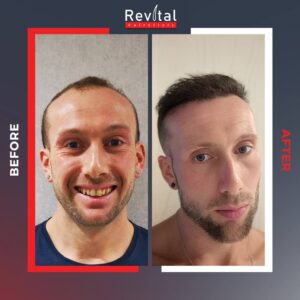
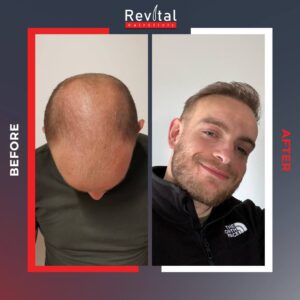
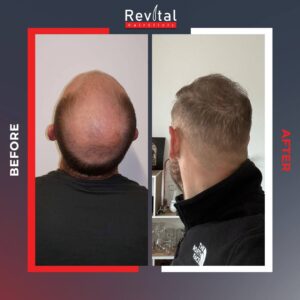
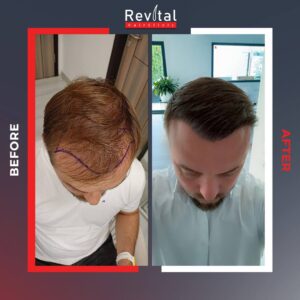
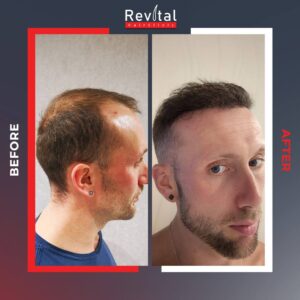
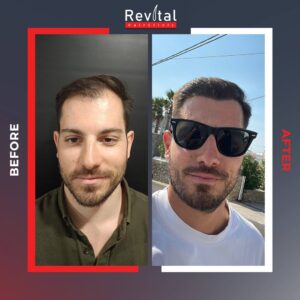
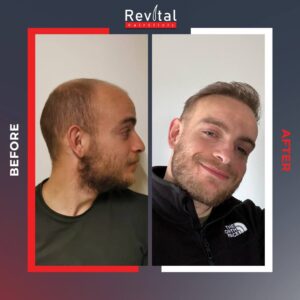
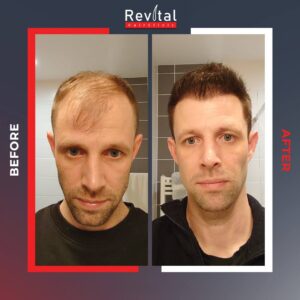
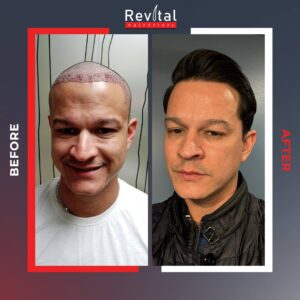
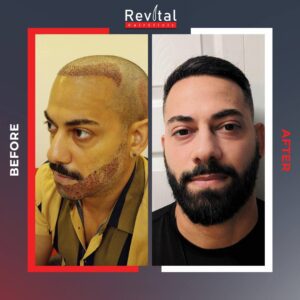
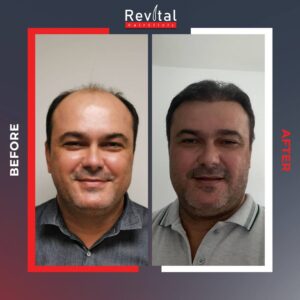
Leave a Reply